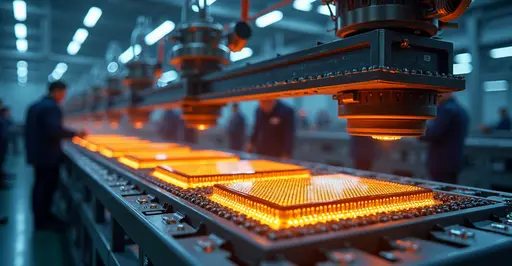
Perovskite Solar Revolution Reaches Commercial Stage
After years of laboratory development, perovskite solar cells are finally making the leap to commercial production. Companies worldwide are scaling manufacturing of these next-generation photovoltaics that promise higher efficiencies at lower costs than traditional silicon panels. Recent breakthroughs in stability and production techniques have overcome key hurdles that previously delayed market adoption.
Record Efficiency Milestones
Perovskite solar cells achieved a stunning efficiency jump from just 3.8% in 2009 to over 26% in single-junction configurations today. Tandem cells combining perovskite with silicon have surpassed 34% efficiency - shattering the theoretical limit for silicon alone. "We're seeing unprecedented efficiency gains," notes Dr. Chen from NREL. "The unique light-absorption properties of perovskite materials allow them to capture broader light spectrums than conventional photovoltaics."
Manufacturing Scale-Up Advances
Leading solar manufacturers like JinkoSolar, LONGi, and Oxford PV have established pilot production lines. Oxford PV recently unveiled commercial-sized perovskite-silicon tandem modules achieving 27% efficiency. "Our focus has shifted from lab breakthroughs to manufacturing readiness," said Oxford PV CTO Chris Case. The company's German factory began shipments in Q1 2025 using advanced atomic layer deposition techniques that solve earlier stability issues.
AI Accelerates Development
Artificial intelligence has dramatically compressed development timelines. Reinforcement learning algorithms optimize manufacturing parameters, while graph neural networks predict material interactions. "AI tools like GPT-5 and Claude 3.7 analyze millions of data points to identify optimal material combinations we'd never consider," explained Dr. Anand Ramachandran. This has accelerated the discovery of lead-free alternatives like tin-halide perovskites that address toxicity concerns.
Commercial Challenges Remain
Despite progress, manufacturers must prove long-term durability. Current IEC standards require 20+ years of operation, while perovskite modules have demonstrated 5+ years stability in accelerated tests. Scaling from lab techniques like spin-coating to roll-to-roll production also presents challenges. "The gap between lab efficiency and production module efficiency remains around 8%," acknowledged UtmoLight's production chief. "But we're closing it faster than anyone predicted."
Market Projections
Analysts project the perovskite market will exceed $10 billion by 2035. Applications range from building-integrated photovoltaics to portable chargers and electric vehicle integration. "The flexibility and lightweight nature open entirely new applications," said BloombergNEF analyst Cornelia Tremmel. With production costs potentially 30% lower than silicon panels, perovskite technology could transform renewable energy economics.

 Nederlands
Nederlands
 English
English
 French
French
 Deutsch
Deutsch
 Espaniol
Espaniol
 Portugese
Portugese






